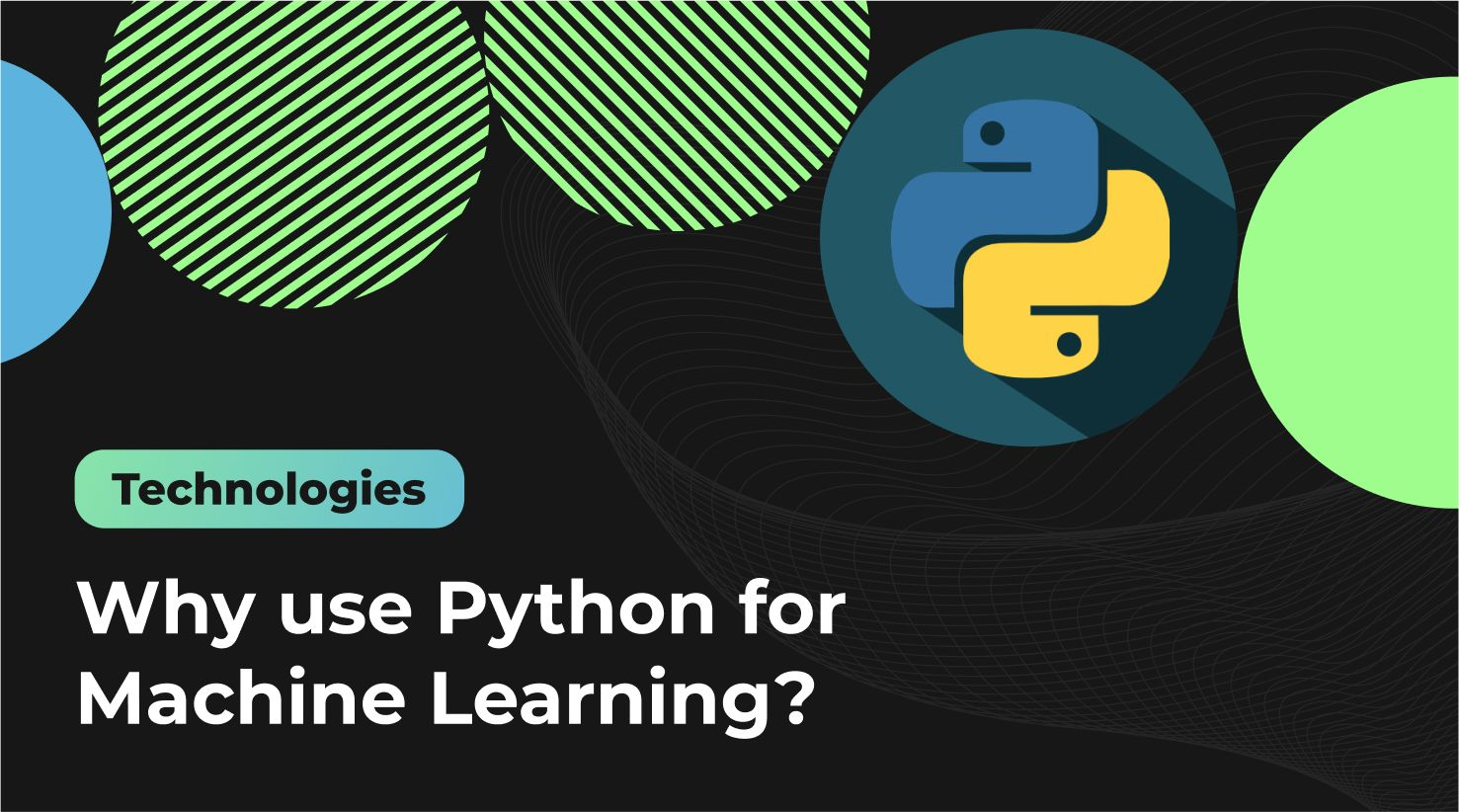As services and industries accept AI-driven services, one programming language has actually become the giant driving this transformation – Python. From reinventing data scientific research to crafting intelligent systems, Python has solidified its position as the best language for ML fanatics and specialists, highlighting its duty in the realm of Python for machine learning.
Python’s flexibility equips developers to create innovative ML designs that satisfy diverse needs and sectors, from responsive equipment to independent AI. Join us as we untangle the keys to Python’s supremacy in ML and find how this amazing language remains to shape the future of AI-driven developments.
- Python’s versatility, readable syntax, and extensive libraries make it a powerful choice for ML.
- Python supports various levels of AI sophistication, from reactive machines to those with self-awareness.
- Python excels in ML due to its simplicity, abundant libraries, platform independence, and active community support.
How does Python work?
Many individuals currently choose Python as their preferred language for Artificial intelligence (ML) and Artificial Intelligence (AI) applications because it is functional and uncomplicated. Understanding how Python operates sheds light on its prevalence in data scientific research and ML, showcasing its significance in the realm of Python for machine learning.
- Readable and Intuitive Syntax
Python’s design belief system prioritizes code meaningfulness, making it justifiable and kept up. Its clean and brief language structure shows up like a common language, making it conceivable for creators to precise complicated thoughts expeditiously.
- Interpreted and High-Level Nature
As a translated language, Python does not call for compilation, enabling real-time execution and debugging.
- The abundance of Libraries and Frameworks
Python’s strong environment of ML collections and structures, such as TensorFlow, PyTorch, and Scikit-learn, energizes developers with a comprehensive toolkit to execute and attempt diverse ML designs.
- Cross-Platform Compatibility
Python’s platform independence allows ML models to be perfectly released across various operating systems, making a smooth individual experience on numerous platforms.
- Easy Integration with Other Languages
Programmers can leverage Python’s ML abilities with libraries written in languages like C++ and Java, expanding the range of tools.

Machine Learning and AI: what’s the difference?
In the ever-evolving landscape of modern technology, 2 terms frequently come together and trigger curiosity – Artificial Intelligence (AI) and Machine Learning (ML). While both are indispensable components of contemporary technologies, it is important to understand their basic distinctions and the role Python plays in driving improvements in ML. This emphasizes the significant effect of Рython for machine learning in forming the mechanical scene.
1. Reactive Machines: The Foundation of AI
Reactive machines are the easiest type of AI, where systems respond based on predefined rules and patterns. These AI versions do not have memory or the ability to pick up from past experiences. Rather, they rely upon fixed algorithms to make decisions, making them suitable for particular, repetitive tasks. Reactive makers excel in efficiency and rate but require more versatility to deal with complicated, vibrant settings.
2. Theory of Mind: Understanding Human Cognition
The theory of mind delves into the world of understanding human emotions, beliefs, and purposes. While people have this remarkable cognitive capacity, AI systems are still beginning to develop such comprehension. In a legitimate theory of mind, AI would certainly be able to understand the frame of mind of others and predict their behavior based on these ideas. This degree of class in AI continues to be an ambitious and continuous location of study.
The joy of coding Python should be in seeing short, concise, readable classes that express a lot of action in a small amount of clear code — not in reams of trivial code that bores the reader to death.
Guido van Rossum
3. Limited Memory: Learning from Experience
AI frameworks with confined memory can choose from past encounters and alter their exercises as fundamental. These designs can alter to dynamic situations, making them fit for jobs with verifiable data. With each interaction and dataset, AI with restricted memory refines its decision-making strategy, steadily becoming more solid and exact.
4. Self-awareness: The Pinnacle of AI Advancement
At the crest of AI refinement exists self-awareness, a thought coordinating human awareness. Whereas individuals have self-awareness and an understanding of their state, capacities, and imperatives, duplicating this in AI frameworks remains a broad trouble. If an AI were to possess self-awareness, it would get its existence and environment, empowering it to form illuminated choices based upon a comprehensive understanding of its capacities.
Python’s versatility and expressive nature empower software engineers to make AI frameworks at changing degrees of refinement. From reactive devices to adaptations with restricted memory, Python serves as an ideal language for building savvy frameworks. Its clean express structure and impressive collections offer a supportive setting for AI analysts to investigate modern frontiers.
Python’s duty is a lot more obvious in the world of Artificial intelligence. Its simpleness and uniformity supply a user-friendly experience, drawing in developers from all backgrounds to embark on the ML trip. Python’s substantial community of ML libraries and structures, consisting of TensorFlow, PyTorch, and Scikit-learn, equips programmers to build detailed ML models with ease, thrusting the field of AI to brand-new heights.
Looking for a Python developer?
Contact Us4 reasons why Python is the best language for Machine Learning
In the ever-evolving landscape of Artificial intelligence (ML), Python has actually increased as the undeniable champ, powering a new era of smart algorithms and transformative AI-driven options. With its stylish simplicity, a vast selection of collections, platform freedom, and vivid community, Python remains the go-to language for ML lovers and professionals.
1. Simplicity and Consistency: A Programmer’s Dream
Python’s syntax is an embodiment of simpleness and readability. Its meaningful nature permits programmers to share facility formulas concisely and straightforwardly, decreasing the finding out contour for novices and enhancing the ML web development process. Unlike other languages, Python’s indentation-based technique implements clean and structured code, making it a developer’s desire to deal with. The consistent and clear syntax ensures that concepts are equated into working versions with very little initiative, promoting collaboration within development teams and improving efficiency.
2. Variety of Libraries and Frameworks: An Abundance of Resources
Python’s bonanza of ML collections and structures encourages developers with extensive resources to deal with diverse ML challenges. Collections like TensorFlow, PyTorch, Scikit-learn, and Keras offer pre-built functions and tools that streamline the execution of complicated ML versions. Whether profound knowing, normal language handling, computer vision, or bolstered understanding, Python’s community has a fabulous toolkit for each ML request. There are numerous hardware learning assets advertised that quicken the advancement handle. This enables researchers and developers to focus on the core of their formulas and push the limits of AI advancement.
3. Platform Independence: Unleashing ML Solutions Globally
Python’s platform independence is a game-changer in the world of ML. Models developed in Python can effortlessly be deployed throughout different platforms and operating systems, decreasing compatibility problems and maximizing the reach of ML applications. This cross-platform adaptability ensures that ML remedies can deal with a worldwide audience without substantial alterations, making Python the excellent option for constructing scalable and available AI-driven services.
4. Excellent Community: Collaboration at Its Best
Python’s growing and vibrant neighborhood of developers is a driving force behind its success. The community’s continuous contribution to Python’s ML environment development leads to brand-new collections, devices, and strategies that press the boundaries of AI development. Considerable paperwork, internet forums, and energetic discussions give ML enthusiasts and developers a wide range of knowledge. The collaborative atmosphere fosters the exchange of ideas, best techniques, and remedies, equipping programmers to develop better ML versions and options jointly.
The worldwide amazingness of Python for Machine Learning is no coincidence. Its simplicity, uniformity, and expressive syntax make it a pleasure to deal with, while the large array of ML collections and structures supply limitless opportunities for building intelligent systems. Python’s platform independence guarantees that ML remedies can rapidly reach a global audience, and its energetic neighborhood of designers gas partnership and development.
Final thoughts
Python is a formidable force in machine learning, transforming complicated formulas into elegant and reliable remedies. As we conclude our journey via Python in Machine Learning, it becomes obvious why Python is the best language for developing intelligent systems.
As we move on, Python will stay at the forefront of transforming the world of artificial intelligence. Embracing Python’s means welcoming a future where intelligent formulas form industries, improve lives, and redefine the possibilities of AI-driven remedies.
At Ficus Technologies, we have seen the transformative power of Python in our projects. Our first-class experts harness Python’s simplicity and consistency to establish innovative ML models that reinvent sectors. Python’s functional libraries and structures have actually become the backbone of our AI-driven applications, equipping us to develop smart systems that adjust and learn from data.
Looking in the future direction, Ficus Technologies is dedicated to staying ahead of the curve in machine learning advancements. With Python as our relied-on ally, we remain to accept advancement, forming a globe where intelligent formulas redefine what’s feasible.
Python’s extensive community support is pivotal in nurturing the growth of its Machine Learning (ML) ecosystem. The dynamic community continually develops and shares new libraries, tools, and techniques, expanding the possibilities of ML. Active discussions, forums, and collaborative contributions create a rich knowledge pool for ML enthusiasts. This collective effort keeps the ecosystem vibrant and ensures that developers stay updated with the latest advancements. The collaborative environment fosters innovation, making Python a powerhouse for ML development with vast and ever-evolving resources.
Python seamlessly integrates with popular machine learning frameworks, making it a preferred language for developing sophisticated models. Major frameworks like TensorFlow, PyTorch, and Keras provide Python APIs, allowing developers to harness the power of these frameworks while leveraging Python’s simplicity and readability. This integration streamlines the machine learning workflow, enabling practitioners to access cutting-edge tools and technologies for tasks such as neural network design, training, and deployment. Python’s versatility and compatibility with these frameworks contribute to its dominance in the field of machine learning.









This article offers a clear and concise explanation for those curious about Python’s dominance in machine learning. It highlights Python’s advantages, such as its readability and the abundance of libraries and frameworks, making it a compelling choice for ML enthusiasts.